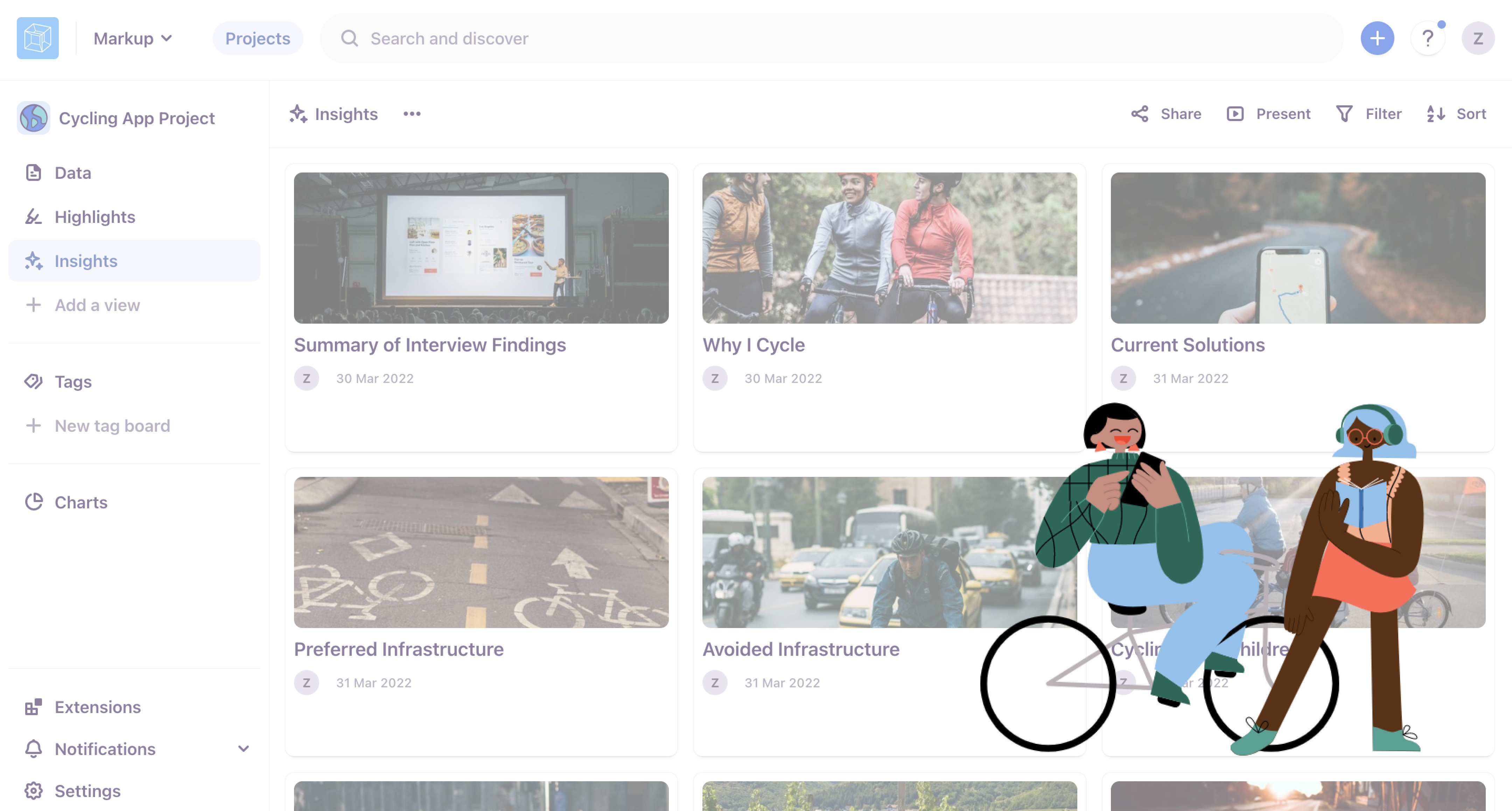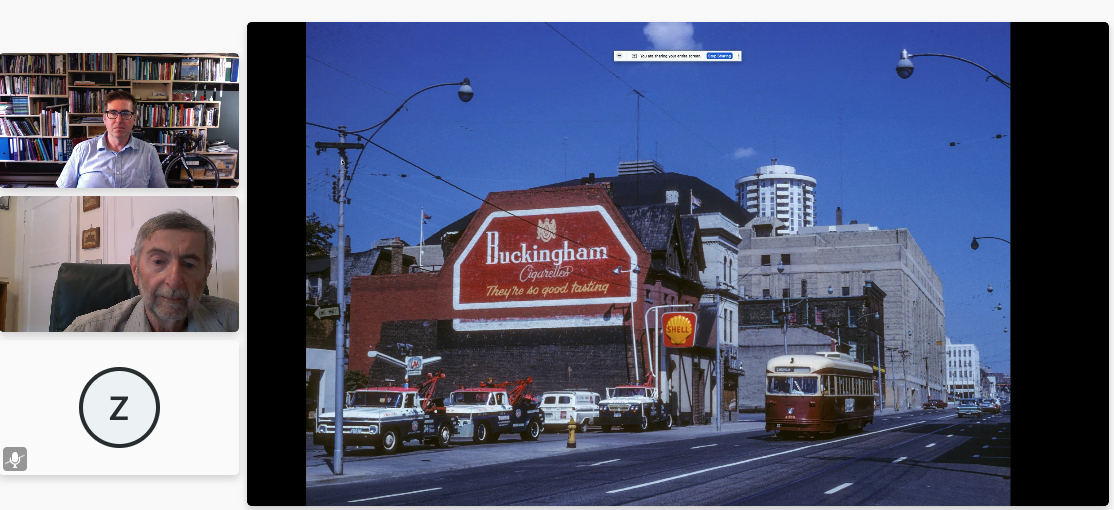Last May, Kelly Goto gave a talk about streamlining your user research with a repository, and specifically she talked about using Dovetail. At Zeitspace, we were inspired to give this tool a try, and a perfect opportunity came up recently with our Cycling Guide project.
This is a pro bono project that Zeitspace has been working on recently, in partnership with CycleWR. The Cycling Guide app will provide cyclists with routes of varying comfort levels to a destination.
As with any project, keeping all of the user research organized and easily accessible by team members can be challenging. Using Dovetail, we have been able to keep all of our research recordings, notes, and results summaries in one place.
This project team includes two ux researchers and a ux designer. One ux researcher conducted a survey early on, and followed that up with a set of semi-structured interviews. I was then able to pick up those survey results, transcripts, video recordings, and any other research assets, and put them into Dovetail. I also tagged the research and pulled out key insights, all within that same Dovetail project. The ux designer, as well as the rest of the team, can now find those research results and use them to create designs that will meet the needs of cyclists, and delight them.
The ability to tag transcripts, or any text-based research artifacts, is what sets Dovetail apart from a simple shared repository. Tagging allows the researcher to highlight a quote and label it from a custom set of tags that are shared across a project. The tags can then be used to help identify themes across the research.
Our research included interviews with 12 local cyclists of varying confidence levels, and many of the themes that emerged won’t surprise any cyclists who are reading this post. Vehicle traffic was the top reason that cyclists describe feeling unsafe. Relatedly, the most preferred cycling infrastructure are separated bike lanes and paved trails.
Participants also described how their behaviors and attitudes changed when cycling with children, with slower speeds and separated infrastructure becoming much more important.
Time of day contributed to a change in behavior, for example some participants, typically female-identifying, mentioned feeling unsafe on isolated routes after dark. Safety was a key theme throughout every interview, including safety while riding, as well as keeping their bikes safe when not in use.
When we asked about planning and navigating a cycling route, many participants talked about using a variety of mapping apps, such as Google Maps, Strava, or Ride with GPS. Some of these apps were designed specifically for cyclists to track their routes, and others are designed primarily to help cars navigate to a destination, but none of the solutions seemed to help beginner and intermediate cyclists find a safe route that suits their comfort level. This insight helped to validate and clarify the main goal for Cycling Guide.
Of course, listening and reading through transcripts in order to appropriately tag an entire data set can be time consuming, but it also only has to be done once. I went through and uncovered these themes, so that the team can explore them easily, as needed.
Did I mention that clicking on a tag will also bring you to that point in the video recording? Being able to hear a user talk about a challenge they’ve experienced is so much more valuable than simply being given a list of “pain points” by the researcher. As Kelly Goto said back in May, “When they have context around it and when we have the quotes that show the end users saying these things, that’s what makes the data valuable.”
Once all the research was tagged, and themes emerged, I documented those themes within Dovetail as well. Insights can be used in Dovetail to create a light report or presentation page that includes text, quotes, pictures, attachments, and text, all of which was easy to gather by filtering through the tags that I had created and applied.
These Insights have been a nice way to present the high level research themes and results to the ux designer and software developers who are currently working on Cycling Guide, as well as any other interested stakeholders. They can also be used as a starting point to dig further into the research and look at specific interview clips or research notes.
Overall, organizing our user research for the Cycling Guide project using Dovetail has been an effective way to find and share results and store everything in one place. I’m excited to see how the research evolves in Dovetail as we complete new studies. Spoiler alert, it won’t be too long before we are able to start doing some alpha testing on the Cycling Guide app. That feedback will easily be added to our Dovetail project, and it will be interesting to see how the Insights evolve, and how that might affect future designs and product planning.





